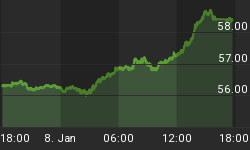In last week's Metals, Mining, and Money from Casey Research, Jeff Clark estimated that given the magnitude of the correction that started last September, it may take until May 2012 for gold to reach a new high. Let's take a look at how long it may take for silver to rebound.
It's a commonly known fact that silver is more volatile than gold. Already in this decade, silver has risen by a factor of 12 from its ten-year low ($48.70 vs. $4.07), while gold has seen about a sevenfold climb ($255.95 vs. $1,895).
This volatility - as you'll see in a minute - holds for corrections as well. On average, silver's retreats have been deeper and longer than gold's. The three big gold corrections we looked at last week averaged 22.8%. Take a look at the three biggest for silver, along with how long it's taken to recover and establish new highs.
The three biggest silver corrections in the current bull market average to 42.1%.
Our recent correction is the second biggest on record since 2001, but what really makes it stand out is the duration. The 2004 and 2006 declines took only five and four weeks respectively to reach their low points. And it was 31 weeks after the crash of 2008 that silver bottomed. Our current decline, measured from the peak reached on April 28, 2011 to its December 29, 2011 low, spans 35 weeks... quite the determined downtrend.
It also takes silver longer to recover than gold: gold's three biggest corrections required an average of 57 weeks and 6 days to regain their old highs, while it's taken silver's three biggest falls an average of 98 weeks and 4 days to catch up.
So how long will it take to recover from the 2011 slump? We don't know the future, of course, but the current correction is close to the average of the three in the chart, so let's apply the average recovery time to our current situation. The average 42.1% correction took 98 weeks and 4 days to recover; using the same ratio, a 46.3% correction would take 108 weeks and 3 days. Counting from the previous peak of April 28, 2011, we wouldn't break the $48.70 high until May 26, 2013 (based on London PM Fix prices).
It shouldn't come as a surprise that silver will take longer to return to its old high than what we found with gold in last week's article. Why? Half of silver's use is industrial, so a weak economy can drag down its demand. We certainly saw that in 2008.
And an exact date is pure conjecture, of course, and ignores fundamental factors that directly influence the price. 2011 is not 2008. In fact, we've already seen an interesting shift in investment activity in both gold and silver markets. The Silver Institute pointed out in a recent market report that "investor activity" was the biggest contributing factor to both last April's rally as well as September's selloff. Meanwhile, demand for physical metal has not only held firm but was projected by GFMS to reach a new record high in 2011.
Investment demand is rooted in the metal's monetary characteristics. It's not a stretch to say that we expect silver to regain its currency appeal soon, given the amount of worldwide fiat currency destruction. This will be perhaps the strongest catalyst for prices going forward. We wouldn't want to be without any silver.
If there's anything that sticks out from this bird's-eye view of the past ten years of data, it's that corrections are normal. And just as obvious is the fact that corrections end.
As with gold, the silver bull market is far from over, regardless of any weakness we may see in the near term. Don't be the impatient investor who gives up too early. And trying to time the market for a short-term profit shouldn't be the strategy in the midst of a long-term bull market. Instead, keep silver's fundamentals in mind: its industrial uses are growing and, like gold, silver is money.
That said, we believe that the window for buying silver at $30 won't be open for too long. The profit you someday realize from silver will be made buying now, when the price is low.
Precious metals and precious metal stocks can be a solid way to store wealth, but only if you invest wisely. Don't let yourself be robbed.

















